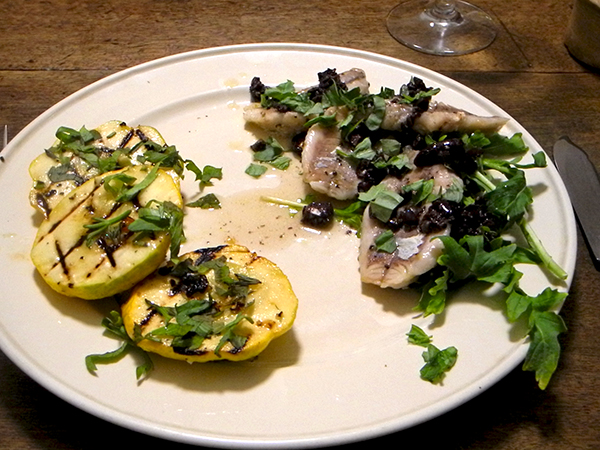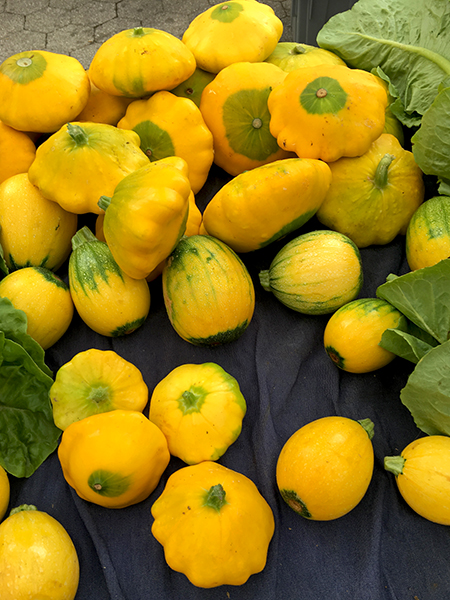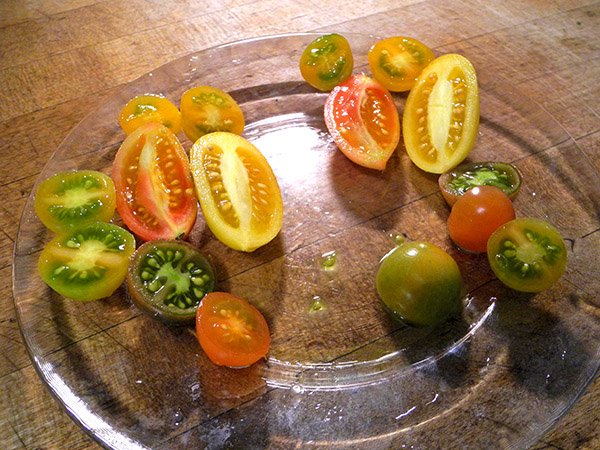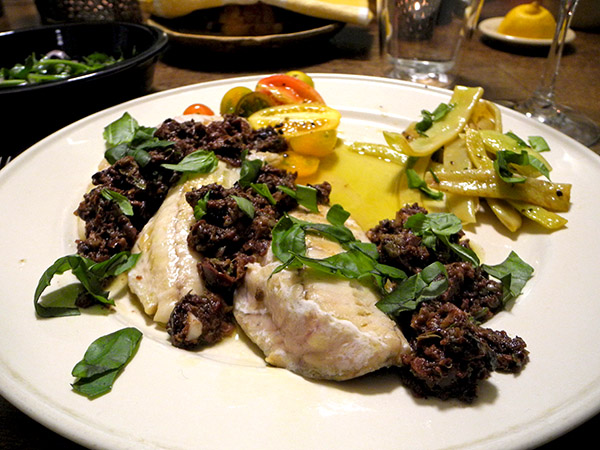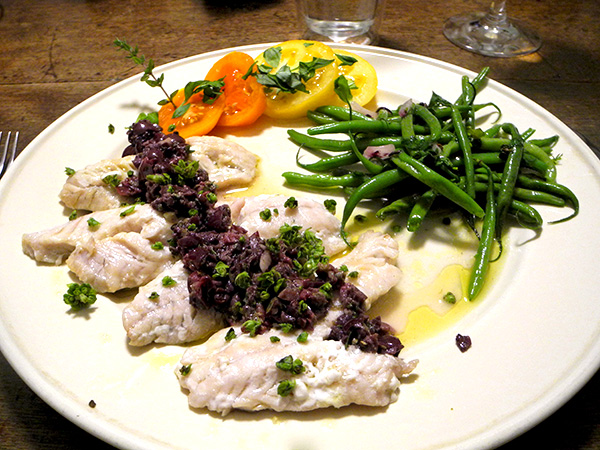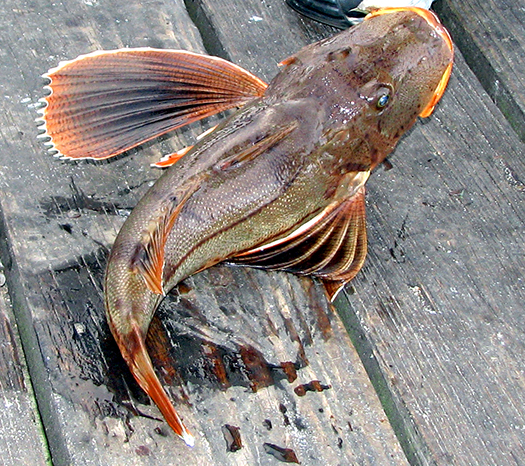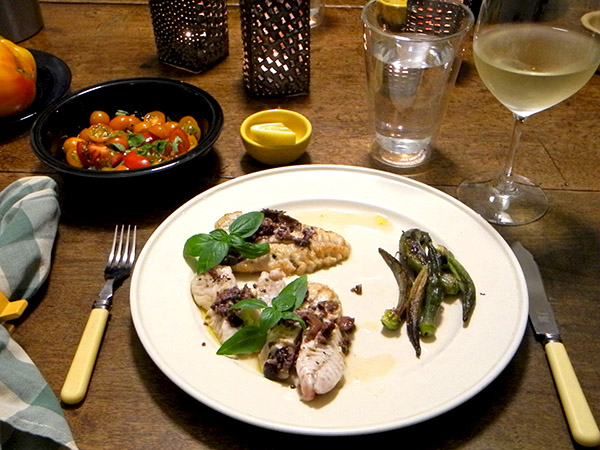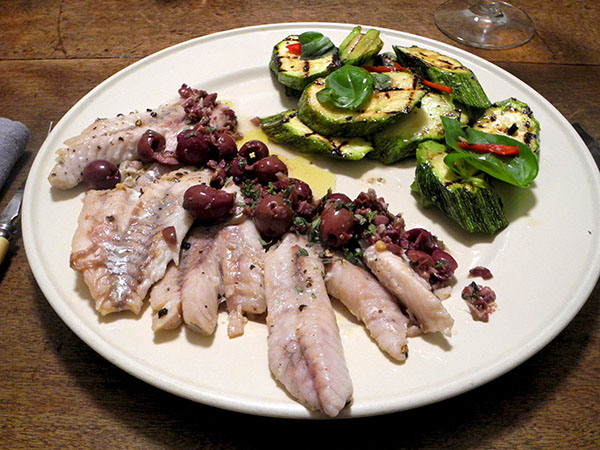
This is a terrific fish, and I’ve said so before. When I came across this site, where the first writer’s story, written only 4 years ago, pretty much sums up the more usual, negative American attitude toward the ‘sea robin’, or ‘gurnard’. Things may finally be changing however, thanks to some savvy fishers and their loyal customers.
Years ago I was on a small party boat fishing for fluke (a client treating myself and some colleagues), and I was really intrigued by these little guys I was pulling up out of the water. I thought they were “pretty and cute”, as one of the folks in that discussion says. The crew on our boat told us they were good for nothing, and tossed them back into the sea.
I now know how to appreciate them, and I have rhapsodized about them at least once before. I hope that party boat crew has reconsidered its prejudices.
Here are the 9 fillets lying on the counter before they were cooked.

- nine small sea robin fillets, or ‘tails’, from P.E. & D.D. Seafood, rinsed, patted dry, then placed in a pan of sizzling olive oil and sautéed over medium-high heat for barely 2 minutes on each side, transferred to the plates, a little organic lemon from Whole Foods Market squeezed on top, then small spoonfuls of an olive tapenade sauce [see immediately below] spread over or between the fillets, sprinkled with some chopped thyme remaining from the preparation of the tapenade
- the tapenade was made by following this simple recipe; I don’t have a powered food processor, but it’s still easy working with only a chef’s knife; the ingredients were Gaeta olives from Buon Italia, Rocambole garlic from Keith’s Farm, one well-rinsed chopped anchovy packed in salt from Buon Italia, well-rinsed Sicilian capers packed in salt from Buon Italia, freshly ground black pepper, olive oil, and the chopped leaves from a few fresh sprigs of thyme from Stokes Farm
On Friday, at her Union Square Greenmarket stand, ‘Berried Treasures’, Franca Tantillo had steered me toward some fantastic, very sweet, juicy, tender, and buttery variety of zucchini she had grown this summer, ‘Costata Romanesco‘, an Italian heirloom variety.
Time for a side trip to Franca’s farm, with this short video, ‘A Day at Berried Treasures Farm with Brendan McHale‘.
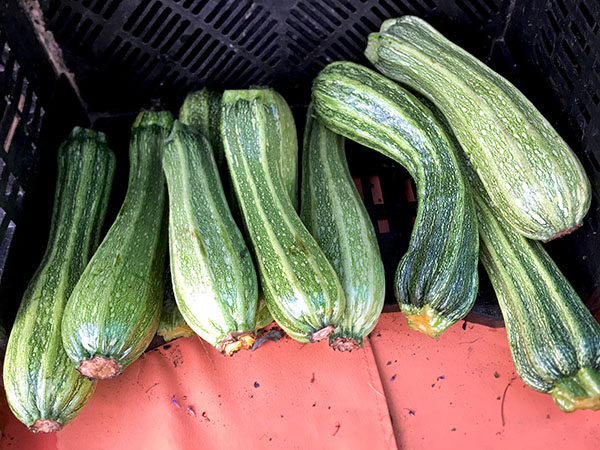
At home I handled the vegetable pretty much as I often do when simply grilling summer squash, and they really were everything she had advertised. I also mixed them up with basil rather than some form of mint, as I have lately, mostly because the basil I had was in superb condition, something often difficult to arrange.
Here the squash slices are on the grill pan, after they had been turned the first time.
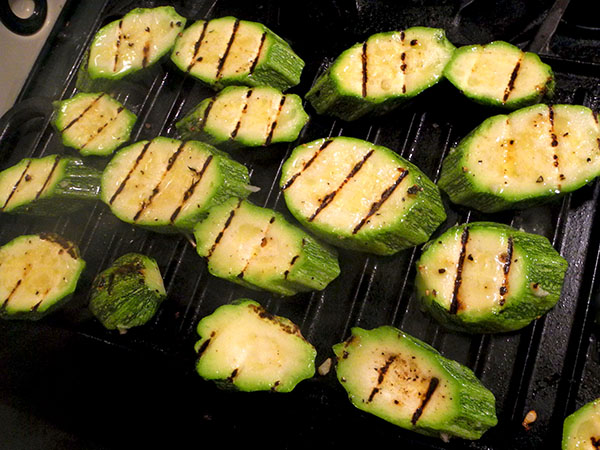
And here they sit waiting for the sea robin to finish sautéeing.

- two Romanesco zucchini from Berried Treasures, sliced, thickly, on the diagonal, tossed inside a bowl with olive oil, finely-chopped Rocambole garlic from Keith’ Farm, sea salt, freshly-ground black pepper, then pan grilled, turning 3 times, on top of a seasoned 2-burner ribbed cast iron plate, arranged on an oval platter, sprinkled with leaves from a basil plant from Stokes Farm and thin slices of one small Calabrian medium hot cherry peppers from Alewife Farm, seeds and pith removed (although that removed all of their heat, which I think we would have welcomed) and allowed to rest for a few minutes while the fish was prepared
- the wine was a Spanish (Girona) rosé, Espelt Coralí rosé (100% Lledoner negre [Grenache] grapes), from Manley’s Wine & Spirits
- the music was the album, ‘Hand Eye’, from Eighth Blackbird
